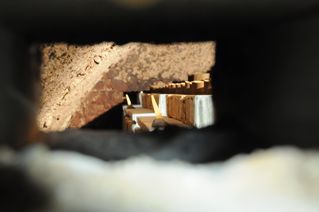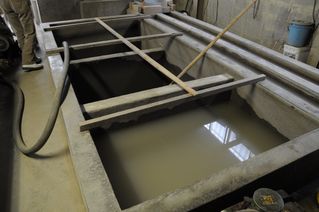Japanese pottery (Bizen porcelain ware) ①
I'm wondering about the definition of word "piercing"- how long do you think it is thought to be completely attained? Bizen porcelain ware has been absolutely piercing their way since the birth to the present for 800 years.

Bizen kiln
During Haji ware (Flesh colored or orange colored soft earthenware, firing by low temperature of under 1000℁E was domestically produced in the 5th century, a new technique was brought to Japan from the Korean Peninsula.
Sue ware is believed to have originated in Korea, and pieces created by the Sue technique surprised Japan and made a new-wave revolution.They had used to fire pottery pieces at field before that, but became to be able to firmly fire pottery pieces with higher temperature by a kiln introduction. Also, the pottery-wheel which had been imported at the time made pottery production faster and more uniform.
Bizen was originally the place where powerful families had governed.Many kilns were built at the flat fields near beaches after the Sue introduction.Daily utensils, funeral instruments, and "Saiki" became to be often made. Saiki is the utensil for ritual matters, and it is thought to be popular among family leaders since they were thin and had sharp outline than "Hajiki" which was the main ware.
Even after the occupation by powerful families had disappeared, porcelain potters still continued to make Sue ware. In addition to daily wares like bottles and jars, they sometimes created ornaments of horses, turtles, chickens, wild pigs, and moles. You can imagine their tranquil and peaceful life along with potter-making. Sue ware kiln ruins prove that there were good quality stoned clay, and its stable reserve.

Deposition Pool
The revolution by Sue ware was already faded out in the 12th century. A new kiln style, Bunen-Chu was introduced to Japan around that time among Sanage-Gama.
Bunen-Chu was the epochal kiln style having a pillar inside, and enabling bigger kiln constructions. Moreover, it could separate smoke into 2 flows and it makes uniform temperature circulation. The development of distribution helped its rapid spread, and it was introduced to a lot of areas in Japan - except for Bizen. This is the Bizen uniqueness that they purposely didn't join the flow. And this is when it was thought that Bizen style was established. Bizen started to leave all the other kilns far behind with its own way since then.
